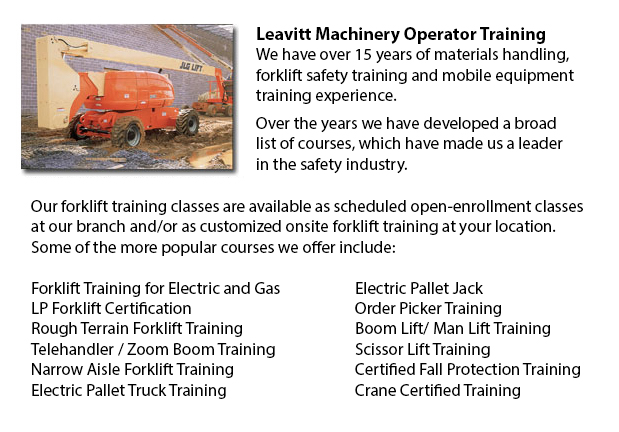
Boom Lift Certification Ottawa - Making use of elevated work platforms allow for work and maintenance operations to be carried out at elevated work heights which were otherwise unreachable. Workers using scissor lifts and boom lifts can be educated in how to safely operate these devices by acquiring boom lift certification training.
Despite the array in lift style, site conditions and applications, all lifts have the potential for serious injury or death when operated unsafely. Electrocution, falls, crushed body parts, and tip-overs can be the terrible result of wrong operating procedures.
To be able to avoid aerial lift incidents, boom lift operators need to be trained by workers who are qualified in safely operating the certain kind of aerial lift they would be using. Aerial lifts should never be modified without the express permission of the manufacturer or other recognized entity. If you are renting a lift, make certain that it is correctly maintained. Before utilizing, controls and safety devices should be inspected to ensure they are correctly functioning.
It is essential to follow safe operating procedures to be able to prevent workplace incidents. Driving an aerial lift while the lift is extended should not be carried out, nonetheless, some models are designed to be driven when the lift is extended. Always set brakes. Set outriggers, if available. Avoid slopes, but when required make use of wheel chocks on slopes that do not go beyond the slope limitations of the manufacturer. Follow load and weight restrictions of the manufacturer. When standing on the boom lift's platform, make use of a safety belt with a two-foot lanyard tied to the boom or basket or a full-body harness. Fall protection is not required for scissor lifts that have guardrails. Never sit or climb on guardrails.
This course features the following topics: training and certification; safety tips in order to prevent a tip-over; slopes and surface conditions; inspecting the work area & travel path; stability factors; other tips for maintaining stability; leverage; weight capacity; pre-operational inspection; testing control functions; safe operating practices; mounting a vehicle; overhead obstacles and power lines; safe driving procedures; PPE and fall protection; using harnesses and lanyards; and avoid falling from the platform.
When successful, the trained worker would learn the following: pre-operational inspection procedures; authorization and training procedures; how to avoid tip-overs; factors affecting the stability of boom and scissor lifts; how to use the testing control functions; how to use PPE and fall prevention strategies.
-
Telehandler Ticket Ottawa
Telehandler Ticket Ottawa - The telehandler or telescopic handler is a commonly utilized equipment in industrial and agricultural applications. This machine is the same in look to a forklift and also functions in a similar manner, though telehandlers... More -
Telehandler License Ottawa
Telehandler License Ottawa - The telehandler or telescopic handler is a frequently used machine in industrial and agricultural applications. This particular equipment is the same in appearance to a forklift and even functions in a similar way, althou... More -
Forklift Training Courses Ottawa
Forklift Training Courses Ottawa - Our forklift operator safety training has been tailored for illiteracy, thus cutting the training time in half. We provide forklift training certification, lift-truck operator driver safety training evaluation, and... More -
Aerial Platform Training Ottawa
Aerial Platform Training Ottawa - Aerial lifts might be used to accomplish certain different duties done in hard to reach aerial spaces. Many of the tasks associated with this style of lift include performing routine upkeep on structures with high ce... More -
Loader Operator Certification Ottawa
Loader Operator Certification Ottawa - Ways To Acquire A Loader Operator Certification - Loader Operator Certification is normally needed for personnel working within construction, warehouse or industrial setting to ensure the safe operation of forkl... More -
Aerial Lift / Boom Lift / Man Lift / Scissor Lift Training in Ottawa
Lift tables or also referred to as scissor hoists can raise both individuals and goods vertically. They are normally utilized in commercial, industrial and construction environments. Commonly, the use of a scissor lift truck is to lift and lower thin... More -
Skid Steer Loader Training in Ottawa
The engine powered skid-steer loader comprises a small and rigid frame, equipped together with lift arms which can connect to lots of industrial attachments and tools so as to perform a wide variety of labor saving jobs. Usually, skid-steer loaders a... More -
Scissor Lift Safety Training Ottawa
Scissor Lift Safety Training Ottawa - A Scissor Lift is a useful type of platform which generally moves in a vertical direction. The apparatus is capable of this movement because of the use of folding supports that are linked in a criss-cross pattern... More

Forklift Training Ottawa
Ottawa, Ontario
forklifttrainingottawa.com
Email Us
About Us


